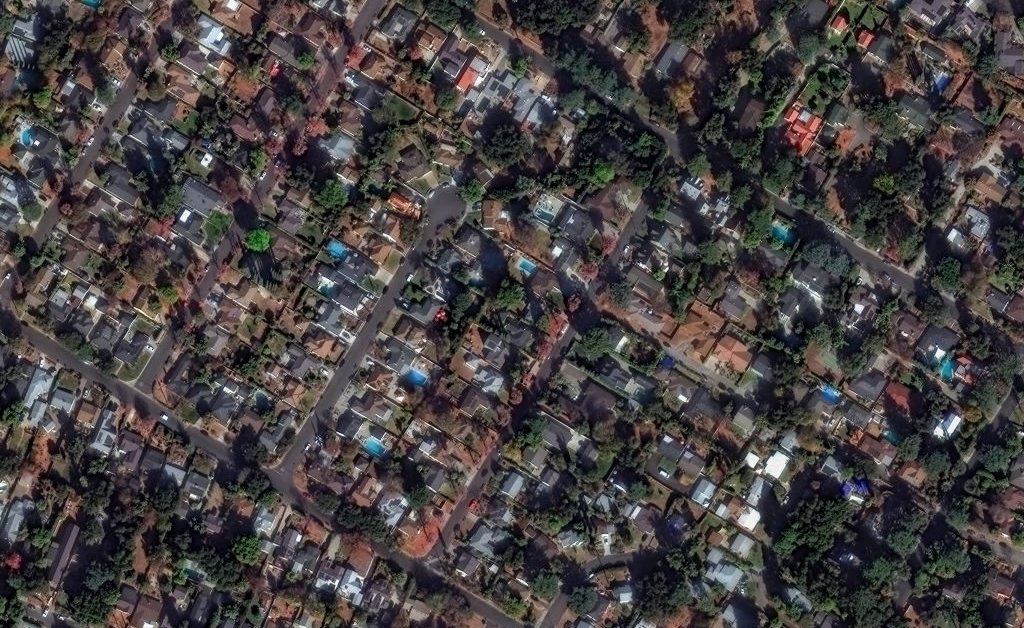Listen to the article
The rise of AI-generated satellite imagery has created a new frontier in misinformation, challenging what was once considered an unimpeachable source of verification. As artificial intelligence technology advances, distinguishing genuine satellite images from sophisticated fakes has become increasingly difficult, with potential consequences for public perception and international relations.
Recent conflicts have demonstrated how quickly these fabricated images can spread. During Ukraine’s Operation Spiderweb in June, when Ukrainian forces successfully struck Russian bombers, fake satellite imagery circulated alongside legitimate photos, exaggerating the damage beyond the estimated ten warplanes that U.S. officials believe were destroyed. The fraudulent images suggested a more devastating Ukrainian victory than what actually occurred.
Similar incidents followed U.S. and Israeli strikes on Iranian nuclear facilities. Fabricated images showing a downed Israeli F-35 fighter jet and doctored footage claiming to be from an Iranian missile’s onboard sensors circulated widely. These deceptive visuals created an impression that Iran had mounted a more formidable military response than it actually achieved.
The India-Pakistan conflict in May provided yet another example, with social media users from both nations sharing counterfeit satellite imagery to inflate claims about their respective military successes. These incidents reveal a troubling pattern where manipulated imagery serves to bolster nationalist sentiment and distort public understanding of military engagements.
The potential impact of such fakes extends beyond regional conflicts. With over half the world’s population using social media, the reach of fraudulent satellite images can be massive and nearly instantaneous. A stark example occurred last year when a fake image depicting a fire near the Pentagon briefly caused the stock market to dip until authorities confirmed it was a hoax.
“The technology has placed this once seemingly irrefutable source of truth under threat,” notes one expert who has tracked the phenomenon. While well-resourced militaries like that of the United States can verify claims using their own satellite networks, the general public lacks such capabilities and remains vulnerable to manipulation.
The barrier to creating convincing fakes has dropped dramatically. What once required specialized knowledge and access to complex models can now be accomplished with free software and simple text prompts. The quality has improved as well—gone are the days of blurry, obviously fraudulent images. Today’s AI-generated satellite imagery can appear remarkably authentic to untrained eyes.
Though experts have warned about these risks for years, the response has been inadequate. Addressing this growing threat requires a coordinated, society-wide approach. Media organizations that use satellite imagery in their reporting should transparently explain their verification processes, helping audiences understand how they authenticate such visuals and match them with ground-level details.
Commercial satellite providers have a role to play as well. By offering verification services that can confirm whether imagery purportedly from their platforms is genuine, they can help stem the tide of misinformation. While third-party AI detection software exists, it remains imperfect and constantly challenged by improving generative models.
Some governments have begun educating their citizens about these risks. Sweden’s public information brochure “In Case of Crisis or War” details how foreign powers might deploy disinformation during conflicts. Similarly, Finland provides comprehensive guidance on recognizing influence operations and evaluating photos and videos during crises.
However, many countries lag behind. The U.S. Department of Defense’s Emergency Preparedness Guide, for instance, includes only brief mentions of media awareness without adequately addressing the sophisticated fakes adversaries might create.
As AI technology continues to advance, the challenge of misleading satellite imagery will only grow more acute. Without concerted efforts to improve detection capabilities and public awareness, these deceptive visuals will increasingly undermine our shared information ecosystem and complicate international relations during periods of conflict and crisis.
Verify This Yourself
Use these professional tools to fact-check and investigate claims independently
Reverse Image Search
Check if this image has been used elsewhere or in different contexts
Ask Our AI About This Claim
Get instant answers with web-powered AI analysis
Related Fact-Checks
See what other fact-checkers have said about similar claims
Want More Verification Tools?
Access our full suite of professional disinformation monitoring and investigation tools




9 Comments
The implications of deepfake satellite imagery for the mining and energy industries are concerning. Accurate spatial data is critical for resource exploration, project monitoring, and regulatory compliance. We’ll need robust authentication methods to ensure the integrity of this information.
Agreed. Maintaining the credibility of satellite data will be essential for these industries to operate effectively and transparently. Developing reliable verification techniques should be a high priority.
The rise of deepfake satellite imagery is a troubling trend that could have far-reaching consequences. Accurate spatial data is crucial for monitoring resource extraction, infrastructure, and environmental changes. We must find ways to protect the integrity of these crucial information sources.
This is a concerning development for the mining and energy sectors, which rely heavily on satellite data for exploration, monitoring, and verification. The potential for AI-generated fakes to disrupt these industries is worrying and will require innovative solutions to address.
This is a concerning development. The ability to generate fake satellite imagery could have serious implications for geopolitics and public trust. We’ll need robust verification methods to combat the spread of misinformation.
Deepfake satellite images are a worrying new frontier in disinformation. It highlights the need for greater transparency and verification processes around the use of satellite data, especially in sensitive contexts like military operations.
Absolutely. Satellite imagery was once considered a reliable source, but AI-generated fakes could undermine its credibility. Rigorous standards and authentication protocols will be critical going forward.
This is a troubling development that could have significant impacts on the mining and energy sectors. Accurate satellite imagery is crucial for everything from exploration to environmental monitoring. Finding ways to combat the spread of deepfake visuals will be a key challenge.
Fake satellite images could be used to mislead the public and decision-makers about the state of mining, energy, and natural resource projects. Maintaining trust in these crucial data sources will be a significant challenge going forward.